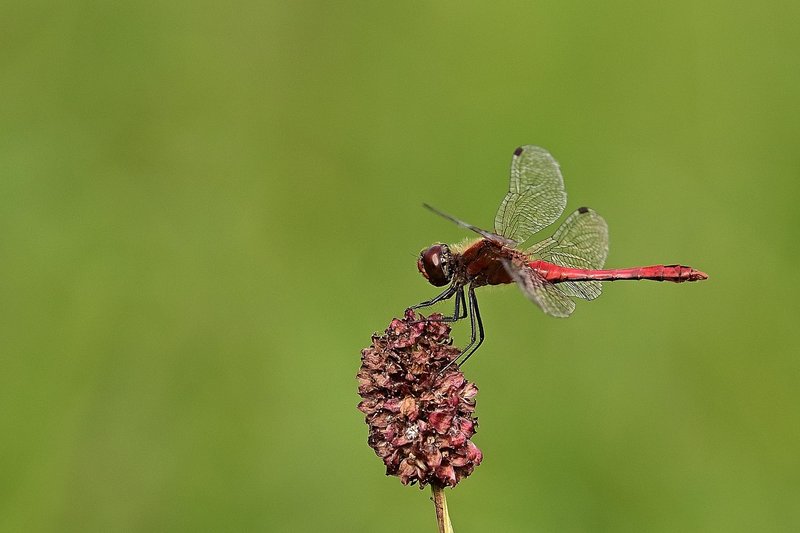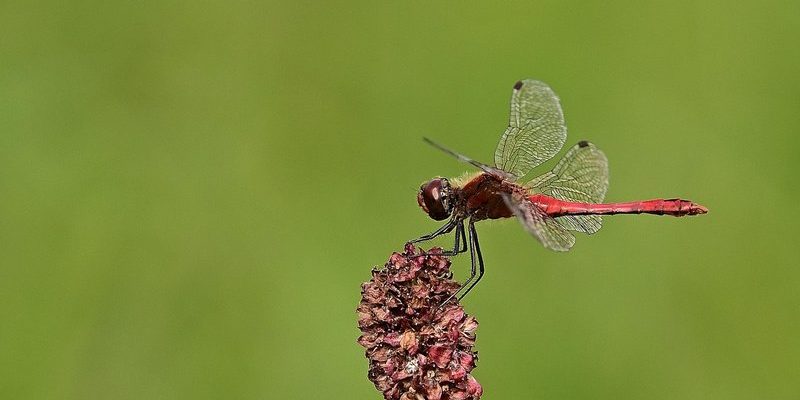
When you picture a dragonfly, you might imagine it zooming through the air, but did you know that they contribute to pollination? Yes, that’s right! Not only do they help pollinate plants, but they also have a few other critical “jobs” that keep our environment thriving. Let’s dive into these roles and discover why these small creatures deserve a big spotlight.
Dragonflies: Nature’s Acrobats
First off, let’s talk about what makes dragonflies so special. They are known for their incredible flying skills. With two sets of wings that can move independently, they can hover, fly backward, and even change directions on a dime. Imagine a tiny helicopter zipping around as it tracks down its next meal—this is the life of a dragonfly!
But their remarkable flying isn’t just for show. This agility plays a significant role in their hunting strategy. Dragonflies primarily feast on mosquitoes and other pesky insects. In fact, some studies suggest that a single dragonfly can eat hundreds of mosquitoes in a day. By keeping the insect population in check, dragonflies help reduce the spread of diseases that mosquitoes can carry.
In short, you could say dragonflies are like aerial pest controllers, and that’s just one of the many hats they wear!
The Pollination Process
Now, let’s explore the pollination aspect. You might be asking, how do dragonflies help with pollination? It’s a bit indirect. While they aren’t as famous for pollinating as bees or butterflies, dragonflies can still contribute to the process.
When they fly from flower to flower, they sometimes pick up pollen on their bodies. That pollen can then be transferred to other plants, helping them reproduce. Think of it like a casual stroll in a garden where you accidentally get bits of flowers stuck on your clothes. As you move, you spread those bits around without even realizing it!
This process is crucial, especially in wetlands where dragonflies are abundant. Many aquatic plants rely on this type of pollination. So, next time you see a dragonfly visiting a flower, remember, it’s playing a part in a much bigger picture of nature.
Beneficial for Biodiversity
Dragonflies are also key players in maintaining biodiversity. They exist at the top of the food chain when it comes to their ecosystem. By preying on smaller insects, they keep those populations under control. This balance is vital because if one species were to overpopulate, it could disrupt the entire ecosystem.
Moreover, dragonflies are indicators of healthy environments. Their presence usually suggests that the local water quality is good. This means clean, unpolluted water, which is essential for many other species, including fish and amphibians. So, when you spot a dragonfly, it’s a good sign that the environment is thriving!
In areas where dragonflies are declining, it often signals underlying issues, such as pollution or habitat destruction. Keeping an eye on their populations can help conservation efforts track overall ecosystem health.
A Look at Their Life Cycle
You might be curious about how dragonflies develop. Their life cycle is fascinating and consists of three main stages: egg, larva, and adult. Here’s a quick breakdown:
- Egg Stage: Dragonflies lay their eggs in or near water. Depending on the species, it can take a few days to a few weeks for the eggs to hatch.
- Larval Stage: After hatching, larvae (also called nymphs) live underwater. This stage can last anywhere from a few months to several years, during which they grow and undergo multiple molts.
- Adult Stage: Once they’re ready, the nymphs emerge from the water, shed their skin, and become adult dragonflies. This transformation is magical, almost like a superhero revealing their true identity!
Each stage is crucial for the dragonfly’s survival and for the health of the ecosystems they inhabit.
Educational Opportunities
Dragonflies are not just interesting to observe; they also provide fantastic learning opportunities. Schools and nature centers often use them to teach kids and adults about ecosystems, biology, and conservation.
You might find classes on insect biodiversity or hands-on activities like building habitats in which dragonflies can thrive. These educational programs often highlight the importance of every species, including seemingly tiny or insignificant ones like dragonflies.
By involving communities, we can foster a greater appreciation for these insects and prompt conservation efforts. Who knows? Maybe the next generation of environmentalists will be inspired by these agile little creatures flitting through the air.
Protecting Dragonflies
As with many species, dragonflies are facing challenges. Habitat loss, pollution, and climate change threaten their populations. Therefore, protecting these amazing insects is crucial.
You can help by creating a dragonfly-friendly environment in your backyard or local park. Here are some tips:
- Add Water Features: A small pond can provide a breeding ground and habitat for dragonflies.
- Plant Native Vegetation: Native plants attract other beneficial insects and provide shelter.
- Avoid Pesticides: Reducing chemical use in gardens helps keep dragonflies and other pollinators safe.
Even small changes can contribute to the preservation of dragonflies and their habitats.
In Summary
Dragonflies are amazing creatures that wear many hats in nature. From their impressive flying skills to their contributions to pollination and biodiversity, they play essential roles in our ecosystems. By appreciating and protecting these insects, we can help maintain the balance of life around us.
Next time you see a dragonfly, take a moment to admire it and reflect on the important jobs it does for our environment. As unsung heroes of the insect world, they deserve a little more love and recognition!

